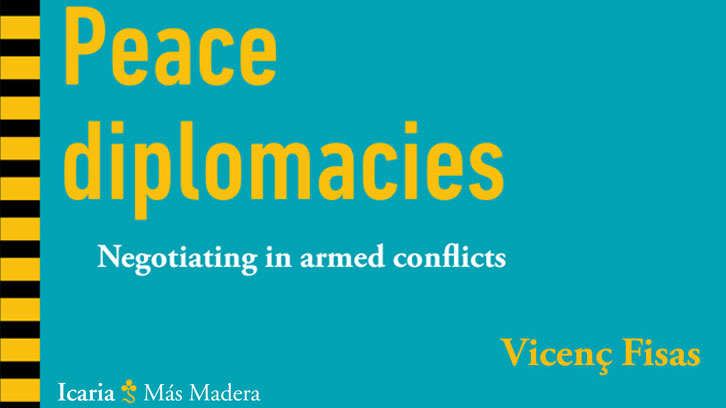New book: "Peace diplomacies: Negotiating in armed conflicts"

The world today is inevitably disconcerted and disoriented regarding a certain kind of armed conflict and acts of pure terrorism, which are revealing the limits of diplomacy and even military actions to at least stop the expansion and brutal behaviour of some armed actors, such as the Islamic State. Every day, the media show attacks with a huge impact, sometimes because they are selective but usually precisely because they are indiscriminate and particularly affect the civilian population. There is an expanding sense that we must be doing something wrong when terror proliferates everywhere, small children are trained to be murderers and terrorism is attractive for a sector of the population, even sectors close to us.
This kind of criminal conflictiveness, which today is clearly out of control and intractable for the time being, dominates our thinking about what armed conflict is in general, the most common kind on the planet. Although it is still brutal, armed conflict has characteristics different to the kind of violence mentioned above. Therefore, no matter how difficult it might be, it does have the possibility of being managed, at least in terms of its flow of physical violence. In other words, the majority of armed conflicts today can be the subject of negotiations and can enter a peace process that puts an end to the armed clash. Broadly speaking, and according to figures from June 2015, two out of every three armed conflicts are already in the negotiation phase, which fills us with hope and poses a huge challenge to what we call “peace diplomacies”. There are conflicts for which we still have no answer because we can barely grasp them. However, the majority are manageable and as the decades go by, more and more conflicts that are entering the negotiation phase.
This book aims to share a few ideas on the necessary job of managing armed conflicts to eradicate the violence they bring with them. It begins with a look at the nature of contemporary armed conflicts, the complexity of many of them and the consequent difficulty addressing them in order to lower their levels of lethality and destruction, as well as their vast humanitarian impact. It then continues with a chapter that contains a reflection on the magical moment when, warriors (and this is a job historically dominated by men, perhaps because they have associated their virility with the use or threat of forced) sometimes glimpse a new horizon of peaceful coexistence without having to use weapons. Without this previous visualisation, it is very difficult for a peace process with prospects of success to emerge. Otherwise, if there is a real desire to work on the unspeakable to stop the spirals of violence, there are enough experiences from which to learn how to build peace and transform societies for the better. The third chapter, which is based on the author’s experience, observation and reflection, pinpoints possible designs and architectures for launching and sustaining a peace process, in which many people or institutions have to take part, playing different and complementary roles, an issue examined in the fourth chapter, while also using the imagination and simple acts called alternative diplomacy which, if done strategically, enhance the more conventional byways of traditional diplomacy. The book ends with appendixes which carry clear messages: the majority of armed conflicts end up being resolved at a negotiating table; the existence of international courts is not incompatible with achieving negotiated political agreements; bilateral ceasefires should be reached in order to negotiate; it is common for armed groups to turn into political parties and run in elections after a peace agreement; and finally, we should never forget that the most difficult thing is not writing a peace agreement but carrying it out.
References
Fisas Armengol, Vicenç. Diplomacias de la paz. Negociar con grupos armados. Editorial Icaria. Más Madera, 120. 2015. ISBN 9788498886856.

